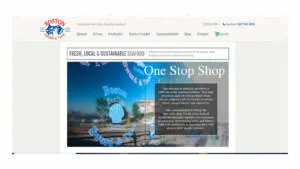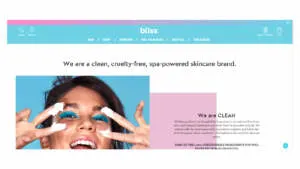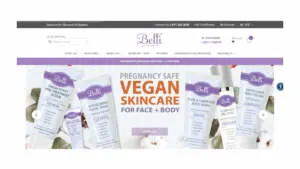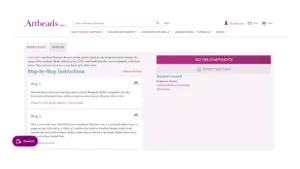How to Start an Online Store: The Help You Need To Get Yours Up and Running

There are currently 7.1 million online retailers in the world with 1.8 million in the United States alone. And more are opening all the time.
In the midst of all this opportunity, how do you know if opening an online store is something you should do? You’ve heard of others who succeeded but how do you know if you’ll also succeed?
Maybe you’ve been on the verge of starting your own business, but you’ve allowed fear to hold you back. Or, maybe you think you don’t have the qualifications to make it as an online entrepreneur.
The only way to know for sure is to do it yourself. And the fact that you know of others who succeeded means the odds are in your favor of making it, too.
In this article, we’ll take all the guesswork out of starting your own business. We’ll also provide you with all the tips and information you need to ensure you are able to operate a successful online store.
It’s Never Been Easier to Start an Online Store
If you’ve ever dreamed of starting an online store, there’s no better time to begin than right now. According to emarketer US consumers will spend $709.78 billion on ecommerce in 2020, which represents an increase of 18.0%. And these are the estimated numbers in spite of everything that’s going on in the world.
But there are more reasons you shouldn’t wait. We’ll talk about them more below.
1. More resources than ever.
There are a ton of resources available to point you in the right direction and answer any questions you may have. Youtube is an especially helpful resource where you can find videos of people showing you step by step how to open up an online store and stock it full of products.
Another helpful resource are Facebook groups. Here you can connect with other like-minded, ecommerce website owners and gain helpful, expert advice.
2. Endless amount of online store builders and features.
Online ecommerce platforms are beginner-friendly and easy to use. They take the guesswork out of designing an online store by providing a selection of pre-made, ready-to-use templates. Another great thing about these templates is that they’re easily accessible, giving you the freedom and functionality to make changes to your site whenever you see fit.
3 Signs You’re Ready to Start Your Own Ecommerce Store
Below we included a few indications that you may be ready to open your own online store. These are just some things that, if you’ve experienced them, you may consider moving forward and taking the plunge to start your small business.
1. You are interested in running an online business.
Are you intrigued by the thought of running an online operation? Maybe you’ve already begun researching the idea or asked the opinion of a few friends. If this is the case, starting an online business may be something you’re ready for.
2. You want to diversify and add another revenue stream.
Maybe you’re somebody who’s only looking to create an additional stream of income. If this is the case, an online store might be the perfect choice for you.
Online stores allow you the flexibility to operate them full-time or on a part-time basis. The decision on how to run yours depends entirely on you and your financial goals.
3. Your needs have become more sophisticated.
If you are someone who makes your own products to sell in person, runs a brick-and-mortar storefront or if you’re already selling on platforms like Amazon or Ebay an online shop may be your next logical step. Opening one will be in your best interest. It will allow you to meet the needs of your growing business and extend your reach to new audiences.
All Your Questions Answered for How to Start an Online Store
Starting an online store can feel like a daunting task. In an effort to simplify the process, we included these step-by-step instructions to help you get started.
Establish a business strategy.
Create a brand.
Choose your online store builder.
Build your online store.
Set up email marketing automation.
Promote your brand and website.
Establish a Business Strategy
Every successful operation starts with a business plan. Ironing out your strategy now will help you outline your goals and ensure you stay on track.
1. Choose a business model.
Before you go into business online, you first have to decide on a model. This should be chosen based on your knowledge, expertise and the specific product you want to sell.
Here we’ve outlined some popular ecommerce business models worth looking into.
Dropshipping: This allows you to be free from the hassles of stocking products and managing inventory. With this model, you only purchase items after the customer has bought them from your store. Then, you order the merchandise from the manufacturer and have the items shipped directly to your customer.
Wholesaling: This is when you buy products in bulk and have them stored in a warehouse. This model is encouraged for established businesses that sell products in volume. Wholesaling is often done in the B2B market with businesses that sell products to other businesses.
White Labeling: With this model, products are manufactured by a third party. But, instead of using the manufacturer’s logo and branding on the finished products, you would use your own. This is done in large part by clothing and beauty brands.
Subscription: This allows customers to subscribe to receive services or products on an ongoing basis. This model is great because it can increase your customer lifetime value and provide you with a steady, consistent income.
Print on Demand: Similar to dropshipping, print on demand frees you from stocking and managing inventory. With POD, you sell customized products that are printed after an order is placed. Then, the order is shipped directly to your customer.
All these models have their own pros and cons. You should look into each of them and select the option that best suits your current and future business needs.
2. Choose a catchy name and get your business license and LLC.
If you haven’t already named your business, there are a number of free tools that will help you do it. You want to choose a business name that’s catchy, but you should avoid names that are hard to spell, difficult to pronounce or that will limit your business growth. If you have an existing small business, you should check and see if the dot com version of your business name is available.
The online Seafood retailer, Boston Sword and Tuna, has chosen a catchy name that is easy to understand. Their name signifies what they do and who they are. Therefore, customers know what to expect.

It’s important to note that when starting your business, you should always check with your city, county and state to see what sorts of sales tax licenses or home business licenses are required. This is essential because different locations have different regulations.
Starting an LLC is a great option because this structure protects your personal assets so they won’t be at risk in cases of bankruptcy or lawsuits.
3. Research deep into your target audience and build personas.
The next thing you want to do is thoroughly research your target market and study your potential customers. Creating buyer personas may prove to be beneficial and help you in doing this.
Buyer personas are semi-fictional detailed representations of your ideal customers. These profiles will aid you in nailing down your target audience.
4. Iron out your startup costs, variable costs and revenue projections.
One of the most important things to consider is how much money it will cost you to get started. You don’t necessarily need a ton of cash, but it’s important to be honest about what you have to work with.
You should also set realistic projection goals and consider all your expenses. You also want to keep track of all your operating costs and consider everything from web hosting to the cost of goods. Some other important expenses to take into account are variable costs, which are the costs of raw materials and packaging that often fluctuate depending on your company’s production volume. These should be factored into your budget since they are essential operating costs.
5. Check out your competitors to see their monetization strategies.
There are a number of paid tools you can use to check out your competitors but we suggest Google Alerts because it’s simple and free. You can also set it up to send you an email report every time one of your competitors gets a mention.
To start using Google Alerts all you have to do is sign into your Google account and enter the names of any competitors you want to track.
Create a Brand
Branding is a way of distinguishing yourself and setting yourself apart. This is a necessary component of online marketing as it helps customers see the uniqueness of your company.
1. Develop brand imagery.
Brand imagery is the aesthetic appearance along with any images that are associated with your brand. It includes all of your brand’s visual assets. These images take a variety of forms from social media posts to images seen in ads and on websites.
Some examples of brand imagery are the McDonald’s red french fry container or the blue Tiffany’s jewelry box. These things influence how customers see and perceive your brand.
The imagery you select also serves the purpose of connecting customers with your brand. To create your brand imagery start by thinking about your ideal customers’ profiles. Consider personal information like age, profession, hobbies and what a typical day looks like for them.
Then source images with those factors in mind. You should also color coordinate your visuals to ensure a harmonious theme.
2. Differentiate your brand.
Creating a brand name and making yourself stand out is especially important for businesses that sell products readily available throughout the web. A simple way to do this is by using the About page on your website.
Your About page serves a separate function from other pages like the homepage and product pages so it should be treated as such. You can use your About page to connect with new customers, telling them why you got into business and giving a behind the scenes look into your process.
Remember, your products may be similar to another company, but your story is your own. Use it to your advantage so that you leave a lasting impression on your customers.
This is something the online retailer, Bliss World does well. On their About page, they specifically state what they do and who they are.

Choose Your Online Store Builder
The online store builder you choose plays an important role in the success of your website. Your decision of who to go with should be made with careful consideration, weighing all your options.
1. Features needed for your online store builder.
Your website builder should include a selection of free and premium themes to choose from. Responsive, mobile-friendly designs are also important because mobile viewing makes up a great majority of website views.
You also need a site that maintains good service and offers 24/7 customer support. If you intend to sell on other platforms like Amazon or Ebay you will need an online store builder who seamlessly integrates with these different marketing platforms. Below we’ve included a few additional features that will prove beneficial to your online success.
An onsite blog: Blogging is loaded with benefits, especially for online merchants. Having one will help improve your SEO rankings and drive more traffic to your store. The ability to operate your blog from your ecommerce platform instead of hosting it elsewhere will be much more convenient for you.
Loyal customer incentives: This feature helps you win new customers and reward loyal shoppers. It gives you the ability to offer buyer favorites like percentage discounts, product bundling and buy one get one free promotions.
Simple inventory management: Your inventory represents a major financial investment. You need an easy way to manage stock and keep track of what you have in inventory. You also need a tool that integrates seamlessly with other inventory management channels.
Resources and training: Once you launch your store, you want to ensure it stays up and running while continuing to thrive. You need a platform that provides a library of resources ready for you to tap into. You also want to learn from people who are experts in the industry and who possess the knowledge you need to get your business to the next level.
2. Online store builders cost money…but how much?
Many platforms allow you to sign up for monthly or yearly plans. The general price a beginner store owner can expect to pay is around $30/month. Pricing for larger stores with more revenue can be up to $300/month.
3. There are so many online store builders to choose from, where do I start?
With the vast amount of options available for your online store, we chose to highlight a few of them, giving you the pros and cons of each one.
BigCommerce
Pro: BigCommerce has robust out-of-the-box features included with every plan and a large ecosystem of Agency and Technology Partners
Con: While BigCommerce has a wide range of paid themes, there are only five free themes
Woocommerce
Pro: One of Woocommerce stand out features includes a large community of WooCommerce Meetup groups that you can tap into for help managing your store.
Con: With WooCommerce you do need to cover the costs of hosting, an SSL certificate and other features that ecommerce platforms like BigCommerce and Shopify include with their pricing.
Shopify
Magento
Pro: Magento has routine site maintenance, security patches and software upgrades.
Con: Magento does not have “no-hassle” automatic updates & upgrades.
Build Your Online Store
After you’ve gone through the steps above, you’re ready to build your store. This is often one of the most exciting parts, allowing you to express your creativity and bring your vision to life.
1. Choose a template that connects with your business and customers.
When choosing your online template, keep in mind the type of product you offer and select one that you feel is the best representation of your brand. You may even choose to look up what other people have to say about the template before making your selection. Then, you should narrow down your choices. This is important because some online platforms have hundreds of template options to choose from.
On many sites, however, templates are grouped into categories. If you’re budget conscious like so many people are in the beginning stages, you may choose to view free template options. If not, and you prefer to view themes built specifically for your industry you can do that, too.
Your theme should complement your offerings and allow customers to view them in the best way possible. As you browse through the different themes take into consideration which ones will best represent your products and your brand. Try to envision your offerings and content in place of what is shown in the template. Then, view the template’s appearance on mobile and desktop to ensure you’re happy with the look.
The retailer Belli Skincare has chosen a template that fits perfectly with their brand. Their theme is simple, allowing their products to remain front and center with no distracting elements.

2. Set up payment gateways.
Payment gateways are merchant services that process credit card payments. Although there are others, some of the more popular ones are Paypal, Stripe and Square.
Having multiple payment gateways is essential for both you and your customers. Shoppers will like it because it makes the checkout process more convenient, allowing them to pay how they want. For you, multiple payment gateways ensure that if one gateway goes down, you are still able to accept payments from customers.
Setting up payment gateways is important to ensure your ecommerce site has multiple methods of accepting payments from customers. Integrating them into an online store is usually a simple process and can be done through your online store settings.
3. Modify your shipping settings.
Most online providers include pre-built shipping settings in every store. You should, however, customize these settings to suit the needs of your business.
Every platform is different, but usually to change the shipping settings you have to go into your back office store settings. From there, you can create shipping rules, set shipping costs and make other shipping related changes.
4. Add your content and products to your online store.
After you have completed the design process, you’ll be ready to add new products to your store. Make sure to include exciting, SEO-optimized product descriptions that accurately describe your offerings and bring them to life.
Product descriptions are important because they enhance the customer experience, which takes place 100% online. Your descriptions also give your store a more professional appearance and, when done correctly, position your product as the perfect solution to your customer’s problem.
When writing your product descriptions the more details you include, the better. This is what Artbeads.com does a great job at. On the product page for their Bianca pendant necklace, they describe everything a shopper needs to know. They also are aware of who their customers are: artistic people who are avid crafters and who want to recreate the jewelry items themselves. That’s why on their product page, in addition to a description they include step-by-step instructions along with the necessary materials required to recreate the piece.

You should also see your product descriptions as an opportunity to stand out and further differentiate your brand. When writing your descriptions aim for around 300 words and lead with benefits over features. Then, fill your product pages with multiple high-quality images that demonstrate your product being used in real-life situations. This is important because it will help customers envision what it’s like to use your product.
If you don’t have images that demonstrate actual people using your product, opt for close-up shots that show the quality of your product. Then, use your description to explain how the item can or should be used in real life.
5. Have a clear return and refund policy.
Return policies put visitors at ease. When shoppers arrive on your site and see that you have a return policy in place, it makes them far more comfortable about making a purchase. It also builds the trust factor and increases the likelihood of them buying from your store.
There are a number of return policy templates you can use but the last thing you want to do is copy and paste the policy of another business. Your policy should be specific to what you do and who you are as a company so you may opt instead to write your own.
When creating your return policy, keep it simple, straightforward and easy to understand. A good example can be seen on the Badgley Mischka website. They have a page dedicated to how to handle returns and their policy is broken down into a few short paragraphs. On their website, they explain how customers can initiate the return process, where to ship the items to and how long returns and exchanges can take.
Set Up Email Marketing Automations
Email marketing is essential and segmenting your subscriber list into groups will help you serve your customers better. Emails should be factored into your overall ecommerce content marketing strategy.
1. Have a pre-purchase email sequence.
The pre-purchase emails you send should target potential customers who are a good fit for your products but who haven’t yet bought anything from you. There are a number of popular tools like MailChimp and Constant Contact that integrate with online website building platforms to help you get started.
Some pre-purchase emails you could send are to thank someone for signing up to your email list, to announce a sale or to offer an exclusive discount.
2. Set up abandoned cart emails.
Abandoned cart emails are sent to shoppers who have added items to a shopping cart but for whatever reason, not checked out. These emails are usually sent informing customers of the items that remain in their carts and prompting them to make a purchase.
In your abandoned cart emails, you may also decide to include a discount or coupon code to encourage customers to buy the items they have placed in their shopping carts. Offering limited discounts will cause them to act more promptly and complete the checkout process as soon as possible.
3. Have an after-purchase email series.
Post-purchase emails nurture customers and oftentimes result in repeat sales. These are sent after a customer has made a purchase in your online store. They usually include order information, along with a message that thanks the customer for making a purchase.
Promote Your Brand and Website
A promotional strategy should never be ignored. Promoting your brand and website are essential components of your online success.
1. Test to ensure that everything works.
Before going live with your website, make sure everything is functioning properly. All your buttons and forms should be completely operational.
To ensure this, test them out by clicking on the links and filling out the forms. You should also go through the checkout process and make sure your live chat is up and running.
2. Start running Facebook ads.
Facebook ads are very inexpensive, which is why so many people decide to use them. They allow you to get started with as little as $5/day.
Another great thing about Facebook is that its advertising platform allows you to focus on particular users. You can target your specific customers and filter your ads by location, age, gender and other demographics.
To get started with Facebook ads you first need to create a Facebook business account. From there, you will be able to set up and run ads through their ads management system.
3. Promote your products on Instagram.
If you want to reach a younger audience, Instagram may be your best bet because it allows you to connect with Influencers. These influencers, who often have large followings, will promote your products to their audience for an agreed-upon fee. Many online retailers choose to go this route.
You can also do shoppable posts from your own Instagram account to encourage buyers to purchase your products. This is a great option because it allows shoppers a way to buy from you without ever leaving Instagram.
Tips for Maintaining Your New Online Store
Like anything, your new online store needs to be maintained. It’s up to you to check from time to time to ensure proper working order.
1. Check for content updates.
You should always be looking for ways to improve your online store. One way of doing this is ensuring your content is kept up to date. This is essential because it ensures customers are receiving the most up-to-date information each and every time they visit.
2. Perform backups.
It’s important to ensure that your website files are backed up frequently. And many times, it’s not enough to rely on your web host provider to do it for you as such backups are not frequent enough. Therefore, to be safe, it’s best to keep a copy of your website on your own computer at all times and backed-up on a regular basis
3. Evaluate links.
Both internal and external links should be checked on a regular basis as well. This is especially important when you have outgoing links that connect to other websites since many times, the URL on the destination website might change or may have been deleted.
Wrapping Up
Now that you’ve been armed with all these ecommerce tools, what is your plan for moving forward? Are you going to step out and open your online store or will decide to stand still and look for more sources of information?
You may never be 100% ready. So, if you’re waiting for perfect conditions to line up before you get started, your online store may never open.
Here we’ve given you all the tips and tools you need to be successful. What you do now is completely up to you, but here’s a word of advice: go for it!

Charlene Anderson is a researcher at BigCommerce where she thrives on uncovering strategies that help online businesses grow, improve, and succeed.


